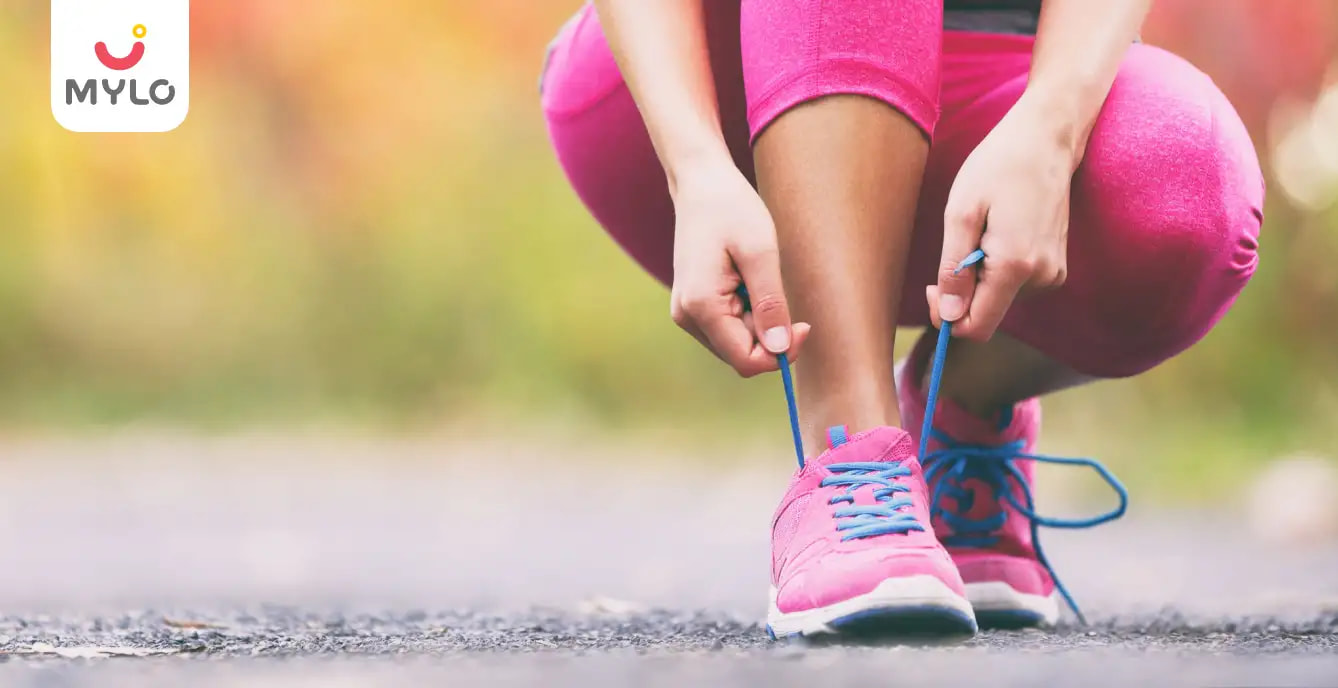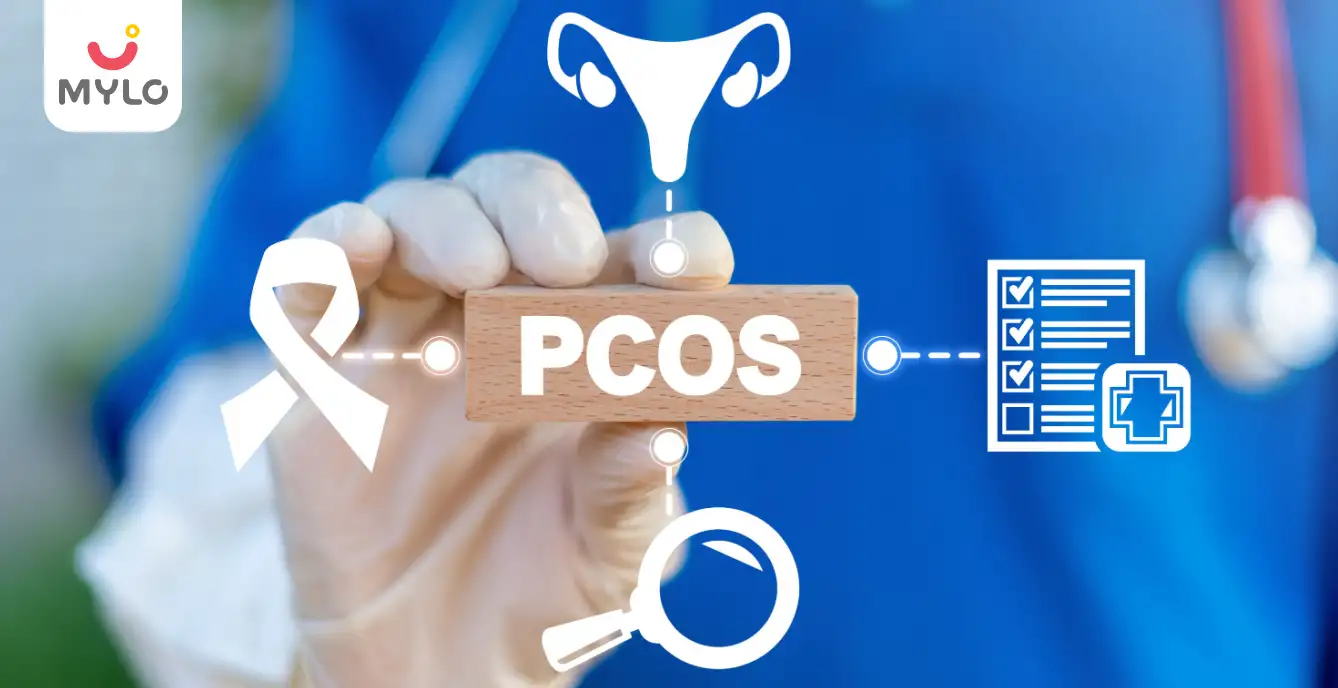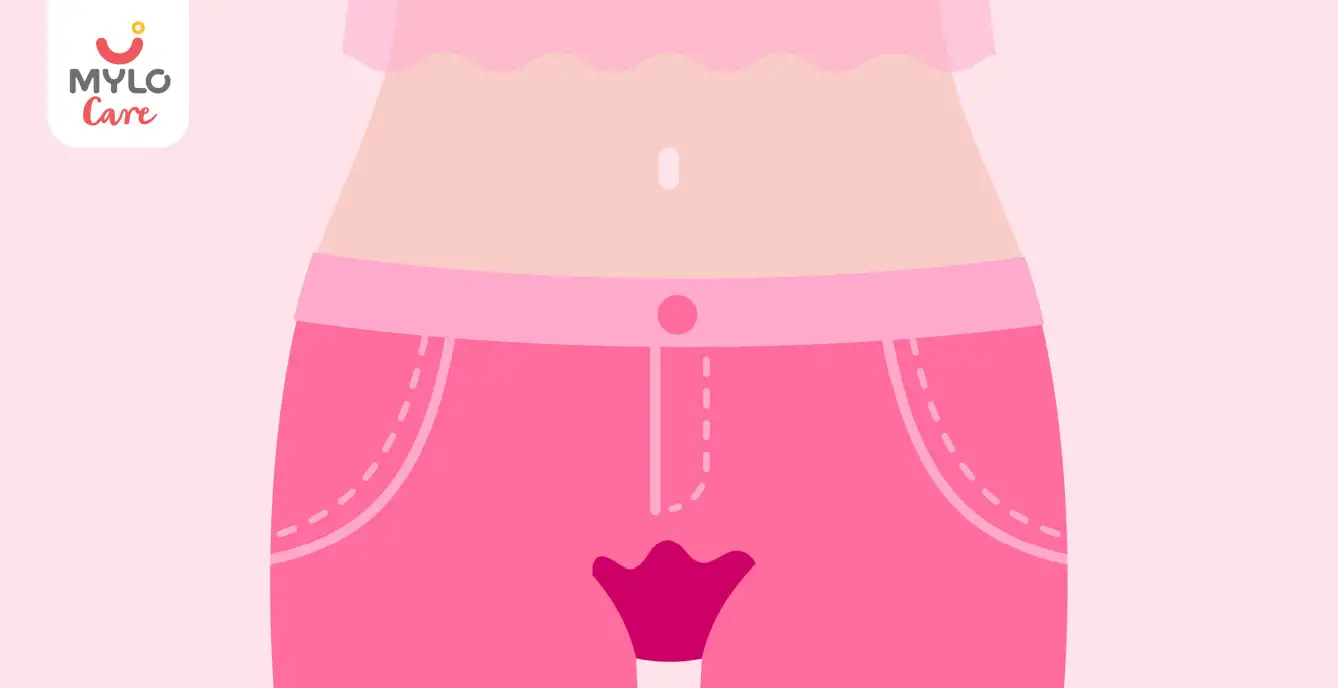Home

PCOS & PCOD

PCOS Exercise: Your Guide to Sweating Away PCOS
In this Article

PCOS & PCOD
PCOS Exercise: Your Guide to Sweating Away PCOS
Updated on 20 December 2023



Medically Reviewed by
Dr. Shruti Tanwar
C-section & gynae problems - MBBS| MS (OBS & Gynae)
View Profile

Avni had been putting on weight for a few years now, but she remained unaware as to what was contributing to her weight gain. However, her recent diagnosis of Polycystic Ovary Syndrome (PCOS) put things in perspective. While the diagnosis wasn’t a pleasant one, it did explain the weight gain and other symptoms she had been noticing. This diagnosis also set her on the path to discover PCOS exercises to help manage her weight and overall health.
So, let us join Avni on her journey to sweating away PCOS with a powerful PCOS exercise plan wherein we will also explore the efficacy of exercising for PCOS weight management, some instructions and precautions to keep in mind and most importantly, the best exercises for PCOS.
What is the Relation Between Polycystic Ovary Syndrome & Physical Exercise?
Exercise has been shown to be an effective tool in managing PCOS symptoms. Regular physical activity can help improve insulin sensitivity and regulate hormone levels, which are key factors in managing PCOS.
Exercise also aids in weight management, as women with PCOS often struggle with weight gain. Additionally, it can boost mood and reduce stress, which are important for overall well-being. Women may also find it helpful to do exercise for PCOS to get period and manage their menstrual cycle.
How to Develop a PCOS Exercise Plan?
Developing a tailored exercise plan for PCOS is crucial to reap the maximum benefits. Here are some steps to help you get started:
Step 1: Consult with a Healthcare Professional
Before starting any exercise regimen, it is important to consult with a healthcare professional, such as a doctor or a certified fitness trainer. They can assess your current health status and provide guidance on the most appropriate exercises for your specific condition.
Step 2: Set Realistic Goals
Set realistic goals that are achievable and sustainable. Focus on improving overall fitness, managing weight, and reducing PCOS symptoms rather than aiming for drastic changes. Gradual progress is key to long-term success.
Step 3: Choose a Variety of Exercises
Incorporate a variety of exercises into your routine to target different muscle groups and keep your workouts interesting. This can include aerobic exercises like running or swimming, strength training exercises using weights or resistance bands, and flexibility exercises like Yoga or Pilates.
Step 4: Start Slow and Gradually Increase Intensity
If you're new to exercise, start slow and gradually increase the intensity and duration of your workouts. This allows your body to adapt and reduces the risk of injury. Aim for at least 150 minutes of moderate-intensity aerobic activity or 75 minutes of vigorous-intensity aerobic activity each week, along with two or more days of strength training exercises.
Step 5: Monitor and Adjust
Regularly monitor your progress and adjust your exercise plan as needed. Listen to your body and make modifications if you experience any discomfort or pain. Remember that everyone's journey is unique, so it is important to find what works best for you.
You may also like: PCOS Natural Treatment: The Ultimate Guide to Natural Remedies for PCOS
Do's and Don'ts to Follow for PCOS Exercise
When it comes to practising PCOS exercise at home, there are certain do's and don'ts to keep in mind. Following these guidelines can help you maximize the benefits and minimize any potential risks:
Do's:
1. Do choose low-impact exercises
Opt for exercises that are gentle on your joints, such as swimming, cycling, or using an elliptical machine. These activities provide cardiovascular benefits without putting excessive stress on your body.
2. Do incorporate strength training
Building muscle mass through strength training exercises can help boost metabolism and improve insulin sensitivity. Include exercises like squats, lunges, and push-ups in your routine.
3. Do practice stress-reducing activities
PCOS is often associated with increased stress levels. Engaging in stress-reducing activities like yoga, meditation, or deep breathing exercises can help balance hormones and improve overall well-being.
Don'ts:
1. Don't overdo high-intensity workouts
While high-intensity interval training (HIIT) can be beneficial for many, it may not be suitable for everyone with PCOS. Intense workouts can lead to increased cortisol levels, which can further disrupt hormone balance. Listen to your body and opt for moderate-intensity exercises instead.
2. Don't skip rest days
Rest and recovery are crucial for allowing your body to repair and adapt to exercise. Avoid overtraining and give yourself adequate rest days to prevent burnout and injuries.
3. Don't compare your progress to others
Each individual's journey with PCOS is unique. Avoid comparing your progress to others and focus on your own goals and improvements. Celebrate small victories and stay motivated on your personal health journey.
You may also like: PCOS Treatment in Homeopathy: The Ultimate Guide to Natural Remedies
5 Best Exercises for PCOS
Now let us discover the most effective Polycystic Ovary Syndrome physical exercise:
1. Aerobic exercises
Engaging in aerobic exercises like brisk walking, jogging, or cycling helps improve cardiovascular health, burn calories, and manage weight. Aim for at least 30 minutes of moderate-intensity aerobic activity most days of the week.
2. Strength training
Incorporating strength training exercises into your routine helps build lean muscle mass, increase metabolism, and improve insulin sensitivity. Include exercises like squats, lunges, deadlifts, and bicep curls. Start with lighter weights and gradually increase as you get stronger.
3. Yoga
Practicing yoga offers a holistic approach to managing PCOS by reducing stress levels, improving hormone balance, and increasing flexibility. Focus on poses that target the pelvic area, such as butterfly pose, cobra pose, and child's pose.
3. Pilates
Pilates is a low-impact exercise that focuses on core strength, flexibility, and body awareness. It helps improve posture, strengthen abdominal muscles, and increase overall stability. Incorporate exercises like the hundred, roll-ups, and leg circles into your routine.
4. Swimming
Swimming is a gentle, low-impact exercise that provides a full-body workout. It helps improve cardiovascular fitness, build strength, and burn calories. If you prefer a non-weight bearing exercise that is easy on the joints, swimming is an excellent option.
You may also like: PCOS Self Care: How to Nurture Your Body and Mind
5 Worst Exercises for PCOS
While exercise is generally beneficial for women with PCOS, there are certain exercises that may not be ideal for managing PCOS symptoms. These include:
1. High-impact exercises
Exercises like running on hard surfaces or jumping exercises can put excessive stress on the joints, potentially causing discomfort or injury. Opt for low-impact alternatives like swimming or cycling instead.
2. Excessive cardio
While cardio exercises are important for cardiovascular health, excessive cardio can lead to increased cortisol levels and potentially disrupt hormone balance. Aim for moderate-intensity cardio exercise for PCOS to get period rather than long, intense sessions.
3. Overtraining
Pushing your body beyond its limits by overtraining can lead to physical and mental exhaustion. This can negatively affect hormone balance and overall well-being. Allow your body enough time to rest and recover between workouts.
4. Isolation exercises
Focusing solely on isolation exercises, such as bicep curls or tricep kickbacks, may not provide the same overall benefits as compound exercises. Compound exercises, which involve multiple muscle groups, are more efficient and effective for managing PCOS.
5. Exercise without proper nutrition
Exercise alone is not enough to manage PCOS. It should be complemented by a balanced diet that supports hormone balance and overall health. Consult with a registered dietitian or nutritionist to develop a nutrition plan that aligns with your exercise routine.
You may also like: PCOS Weight Loss in 1 Month: How to Shed Pounds Fast
PCOS Exercise at Home or Gym: Which is Better?
Whether you choose to exercise at home or at the gym depends on personal preference, convenience, and access to equipment. Both options have their own benefits and drawbacks. Here are the key factors to consider:
Exercise at Home
Exercising at home can provide the following benefits in PCOS:
1. Convenience
Exercising at home eliminates the need for travel and allows for flexible workout timings.
2. Cost-effective
Setting up a basic home gym can be more cost-effective in the long run compared to gym memberships.
3. Privacy
Some women may feel more comfortable exercising in the privacy of their own home, especially if they are self-conscious about their appearance or prefer a more personalized workout experience.
Exercise at the Gym
Exercising at the gym can provide the following benefits in PCOS:
1. Variety of equipment
Gyms offer a wide range of exercise equipment and facilities that may not be available at home, such as treadmills, weight machines, and group fitness classes.
2. Motivating environment
The energy and atmosphere of a gym can be motivating for many individuals, as they are surrounded by like-minded individuals working towards their fitness goals.
3. Professional guidance
Gyms often have certified trainers who can provide personalized guidance, create tailored workout plans, and ensure proper form and technique.
Ultimately, the choice between exercising at home or at the gym depends on individual preferences, goals, and access to resources. The most important factor is consistency and finding a routine that works for you.
FAQ’s
1. Can PCOS be treated with exercise?
While exercise alone cannot treat PCOS, it can be an important component of an overall treatment plan. Exercise, when combined with a healthy diet and other lifestyle changes, can help manage PCOS symptoms, improve insulin sensitivity, promote weight loss, and enhance overall well-being.
2. Can walking reduce PCOS symptoms?
Walking is a simple yet effective form of exercise that can positively impact PCOS symptoms. Regular brisk walking can help improve cardiovascular health, promote weight loss, enhance insulin sensitivity, and reduce stress levels. Aim for at least 30 minutes of brisk walking most days of the week to experience the benefits.
3. Which is better for PCOS, gym, or yoga?
Both the gym and yoga can be beneficial for managing PCOS, but they offer different advantages. The gym provides access to a wide range of equipment and facilities for strength training and cardiovascular workouts. On the other hand, yoga focuses on mindfulness, stress reduction, and flexibility. It can help balance hormones, improve posture, and promote relaxation.
Key Takeaways
In conclusion, exercise plays a crucial role in managing the symptoms of PCOS and improving the overall well-being of women affected by this condition. By engaging in regular PCOS exercise, women can experience a range of benefits, including weight management, hormonal balance, improved insulin sensitivity, reduced stress, and increased fertility. Remember, getting started on a fitness journey can be overwhelming, but with the right mindset, support, and guidance, it is possible to achieve a healthier and happier life with PCOS.
References
1. Patten RK, Boyle RA, Moholdt T, Kiel I, Hopkins WG, Harrison CL, Stepto NK. (2020). Exercise Interventions in Polycystic Ovary Syndrome: A Systematic Review and Meta-Analysis.
2. Woodward A, Klonizakis M, Broom D. (2020). Exercise and Polycystic Ovary Syndrome. Adv Exp Med Biol.





Medically Reviewed by
Dr. Shruti Tanwar
C-section & gynae problems - MBBS| MS (OBS & Gynae)
View Profile


Written by
Anandita Sharma
Drawing on more than a decade of expertise in administration, Anandita Sharma currently serves as a content operations e
Read MoreGet baby's diet chart, and growth tips

Related Articles
Related Questions
Influenza and boostrix injection kisiko laga hai kya 8 month pregnancy me and q lagta hai ye plz reply me

Hai.... My last period was in feb 24. I tested in 40 th day morning 3:30 .. That is faint line .. I conculed mylo thz app also.... And I asked tha dr wait for 3 to 5 days ... Im also waiting ... Then I test today 4:15 test is sooooo faint ... And I feel in ma body no pregnancy symptoms. What can I do .

Baby kicks KB Marta hai Plz tell mi

PCOD kya hota hai

How to detect pcos

RECENTLY PUBLISHED ARTICLES
our most recent articles

PCOS & PCOD
PCOS and Pregnancy: How to Manage PCOS on the Path to Parenthood

PCOS & PCOD
PCOS Tests: The Power of Diagnostic Tests in Your Health Journey

Stories
Must-Read Ruskin Bond Short Stories for Little Minds

Stories
The Top 10 Tenali Raman Stories You Must Read to Your Kids

Ovulation
Ovulation Bleeding: The Ultimate Guide to Causes, Symptoms and Management

Ovulation
A Guide to Recognizing Symptoms of Ovulation After HCG Injection
- Bulky Ovaries Explained: What Every Woman Should Be Aware Of
- Ovulation: The Key to Maximizing Your Chances of Conception and Pregnancy
- The Ultimate Compilation of Fancy Dress Ideas for Young Kids
- How Long Does Sperm Take to Reach the Egg?
- Pregnancy Symptoms After Ovulation Day by Day: Exploring the Daily Progression
- Signs Ovulation is Over: Your Guide to Understanding the End of Ovulation
- Top 15 Akbar and Birbal Stories for Young Kids
- How Soon After an Abortion Can You Get Pregnant?
- PCOS and Sex: Exploring Impact on Health and Debunking Common Myths
- Papaya for PCOS: Exploring the Link and How It Can Positively Impact Your Health
- How to Boost Fertility in Your 30s: The Ultimate Guide
- Anovulation Meaning Explained: What You Need to Know About Its Causes & Treatment
- Basal Body Temperature: How It Can Help You Track Ovulation?
- Ovulation Pain: Is It Normal or a Cause for Concern?


AWARDS AND RECOGNITION

Mylo wins Forbes D2C Disruptor award

Mylo wins The Economic Times Promising Brands 2022
AS SEEN IN
















- Mylo Care: Effective and science-backed personal care and wellness solutions for a joyful you.
- Mylo Baby: Science-backed, gentle and effective personal care & hygiene range for your little one.
- Mylo Community: Trusted and empathetic community of 10mn+ parents and experts.
Product Categories
baby carrier | baby soap | baby wipes | stretch marks cream | baby cream | baby shampoo | baby massage oil | baby hair oil | stretch marks oil | baby body wash | baby powder | baby lotion | diaper rash cream | newborn diapers | teether | baby kajal | baby diapers | cloth diapers |








